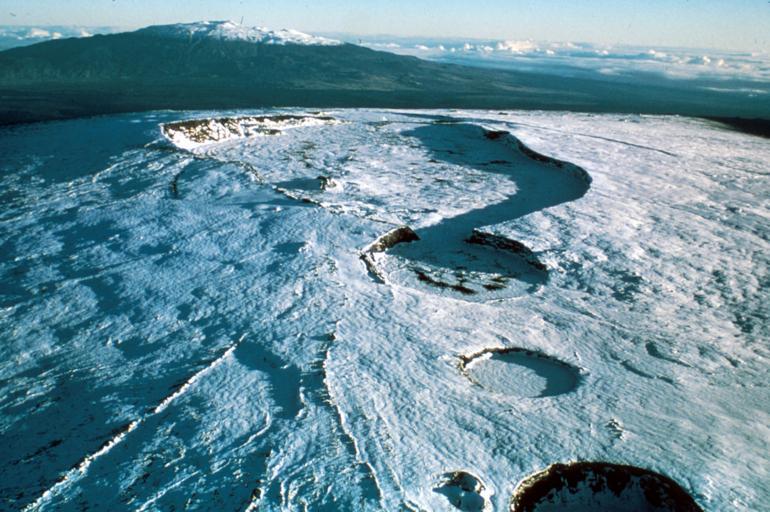MAKE A MEME
View Large Image

| View Original: | Mauna_Loa:_A_Stirring_Giant?.png (1400x931) | |||
| Download: | Original | Medium | Small | Thumb |
| Courtesy of: | www.flickr.com | More Like This | ||
| Keywords: maunaloa volcano hawaii bigisland hawaiianvolcanoobservatory naturalhazard crater outdoor sea aerial This picture of the Mauna Loa Volcano, with several craters visible, was taken in 1975, but after a 30-year repose, this sleeping giant may be slowly stirring to life. While there are no signs of impending eruption, the Hawaiian Volcano Observatory (HVO) has recorded an increased level of seismic activity on the flanks and summit of Mauna Loa over the past 13 months. Four distinct earthquake swarms—clusters of earthquakes occurring closely in time and location—have occurred since March 2013. Each swarm began with earthquakes northwest of the summit (Mokuʻāweoweo Crater) at 4 to 15 km (2.5–9 mi) deep, followed by shallow earthquakes at the summit from several days to one month later. These earthquakes have all been less than magnitude-2.2, except for a magnitude-3.5 earthquake on May 9, 2014. Mauna Loa on the Island Hawaiʻi is the world’s largest volcano. People residing on its flanks face many hazards that come with living on or near an active volcano, including lava flows, explosive eruptions, volcanic smog, damaging earthquakes, and local tsunami (giant seawaves). The County of Hawaiʻi (Island of Hawaiʻi) is the fastest growing County in the State of Hawaii. Its expanding population and increasing development mean that risk from volcano hazards will continue to grow. U.S. Geological Survey (USGS) scientists at the Hawaiian Volcano Observatory (HVO) closely monitor and study Mauna Loa Volcano to enable timely warning of hazardous activity and help protect lives and property. Recent status reports on the Mauna Loa Volcano can be found here: hvo.wr.usgs.gov/activity/maunaloastatus.php This picture of the Mauna Loa Volcano, with several craters visible, was taken in 1975, but after a 30-year repose, this sleeping giant may be slowly stirring to life. While there are no signs of impending eruption, the Hawaiian Volcano Observatory (HVO) has recorded an increased level of seismic activity on the flanks and summit of Mauna Loa over the past 13 months. Four distinct earthquake swarms—clusters of earthquakes occurring closely in time and location—have occurred since March 2013. Each swarm began with earthquakes northwest of the summit (Mokuʻāweoweo Crater) at 4 to 15 km (2.5–9 mi) deep, followed by shallow earthquakes at the summit from several days to one month later. These earthquakes have all been less than magnitude-2.2, except for a magnitude-3.5 earthquake on May 9, 2014. Mauna Loa on the Island Hawaiʻi is the world’s largest volcano. People residing on its flanks face many hazards that come with living on or near an active volcano, including lava flows, explosive eruptions, volcanic smog, damaging earthquakes, and local tsunami (giant seawaves). The County of Hawaiʻi (Island of Hawaiʻi) is the fastest growing County in the State of Hawaii. Its expanding population and increasing development mean that risk from volcano hazards will continue to grow. U.S. Geological Survey (USGS) scientists at the Hawaiian Volcano Observatory (HVO) closely monitor and study Mauna Loa Volcano to enable timely warning of hazardous activity and help protect lives and property. Recent status reports on the Mauna Loa Volcano can be found here: hvo.wr.usgs.gov/activity/maunaloastatus.php | ||||